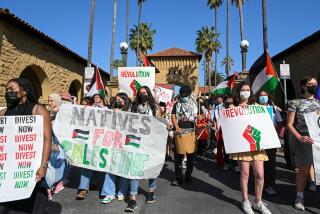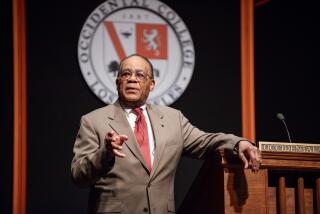Greatness as a Memorial
- Share via
J. E. Wallace Sterling moved large across the California scene with the outsize form of a football player, the mind of a scholar, the skills of an administrator and a genial gift of prying vast sums of money from people who shared his vision of higher education.
He left his mark in many ways at many places, plying his trade as historian at Caltech, directing the Huntington Library and Art Gallery and then, for 19 remarkably fruitful years, guiding the growth and development and enrichment of Stanford University as its president.
He died on Monday, a victim of cancer, at the age of 78, at his home in Woodside, near the Stanford campus. And it will be, appropriately, in the Stanford Memorial Church on Tuesday that his contributions will be remembered.
He presided over the flowering of the university from 1949 until 1968, a period of unprecedented achievements measured both quantitatively and qualitatively. He anticipated educational needs with the recruitment of those who would become national leaders in bio-chemistry, electrical engineering, computer sciences. His attention to quality attracted world-renowned professors. The graduate program, embracing almost half the student body, won recognition as one of the three best in the nation.
His leadership was distinguished by more than ideas, policies and principles. He had extraordinary success in raising money, leading two record-breaking academic fund-raising drives so that the university could back its commitment to academic excellence with extensive financial resources.
The greatness of the university stands as his memorial.
More to Read
Sign up for Essential California
The most important California stories and recommendations in your inbox every morning.
You may occasionally receive promotional content from the Los Angeles Times.










